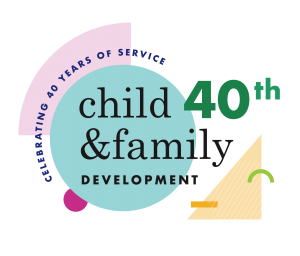By Cynthia Brouillard, PsyD ~ Child and Family Development
Children and adolescents with autism spectrum disorder are up to four times more likely to experience significant levels of anxiety compared to typically developing children. Anxiety is one of the most common co-occurring conditions in children on the autism spectrum and can present in a variety of ways including generalized anxiety, fears and phobias, obsessive/compulsive behaviors and social anxiety. As children and adolescents with ASD also experience difficulties with communication, regulating their emotions and effectively self monitoring, they may not verbalize their feelings in a way that makes it clear to others that anxiety is actually the culprit. Emotional outbursts and meltdowns which seem oversized to the problem, rigid behavior and avoidance are often the end result of anxiety.
Why are those on the autism spectrum more prone to anxiety? Several factors are likely at play. Difficulties reading social cues make it hard to determine what others expect of you and result in social anxiety. Problems with flexible thinking contribute to difficulties adapting to change and may result in overwhelming anxiety when events do not go as planned or schedule changes occur. Children and adolescents on the autism spectrum are also prone to all or none thinking. As result, they are more likely to see things in extreme terms as being “always” or “never” a certain way which makes coping with daily events more challenging and hinders effective problem solving.
The good news is that therapeutic interventions help. With modifications including such strategies as using visual supports, instruction and practice to recognize and label emotions, as well as directly teaching copings skills, behavioral interventions such as cognitive behavior therapy have been found to be as effective for children on the autism spectrum as for children with anxiety alone. The type of intervention which will be most effective for your child will depend on a variety of factors including your child’s verbal skills.
Below are some strategies which may be helpful if your child is struggling with anxiety:
– Visual systems can be extremely helpful for providing your child with predictability, choice and control – all of which can result in a reduction in anxiety. This includes such strategies as providing your child with a schedule which outlines the events of the day so that your child can predict what is to occur.
– Highlight changes to your child’s typical routines by teaching them to recognize a change card. This can help them anticipate and better adapt to changes when they occur. A change card can be any symbol such as an orange triangle. Using visual cues and teaching coping skills which are then linked to that cue can help teach your child valuable skills such as how to flex their thinking and adapt to change so that they can better “go with the flow” of the day.
– Sensory input can be overwhelming for children with ASD. Depending on your child’s sensory needs, noise canceling headphones, fidgets, weighted blankets, a calm and quiet place or a deep pressure squeeze may help your child calm and reorganize.
– Waiting can be very challenging for children with ASD. Bring a “Waiting Bag” which contains fidgets, sensory toys and other preferred items to places where waiting is likely to occur. Visual Time Timers and numbered countdown strategies can also help give your child a better sense of how long they will have to wait as children with ASD are particularly likely to have difficulty making time estimates. Therefore, statements like “just a bit longer” or “five more minutes” are often not helpful.
– Brainstorm and role play things your child can talk about at social gatherings in advance of the event. Having a plan and practicing what to say and do at a special event will help your child be more prepared and less anxious.
– Make an exit plan in the event that you child needs to either take a break from or leave an environment that they are finding overwhelming. Use a simple cue such as a break card or code word so that your child feels empowered to manage themselves. This can avoid meltdowns and ultimately build their confidence with regard to self control.
– Reward brave behavior such as trying something new or facing a feared item or environment.
Read and listen to more information here about ASD:
– Early Signs of Autism Spectrum Disorder
– Smarty Podcast: The Early Signs of Autism Spectrum Disorder
Cynthia Brouillard is a Licensed Psychologist at Child & Family Development. Cognitive behavior therapy, as well behavior management strategies can be very powerful and effective tools to help your child learn to better manage their anxiety so that they are in charge of their emotions rather than their emotions being in charge of them. For an appointment to determine what type of intervention would be most effective for your child, request an appointment at Child and Family Development.
Child & Family Development

Locations:
Mitdtown:
4012 Park Road, Suite 200
Charlotte, NC 28209
704.332.4834
Pineville:
11940 Carolina Place Parkway, Suite 200
Charlotte, NC 28134
704.541.9080
Website | Facebook | Instagram | Twitter




